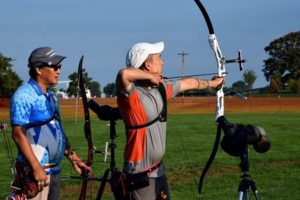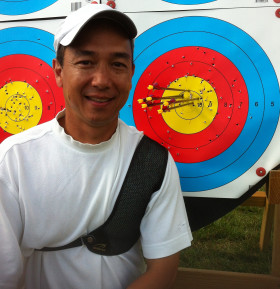It’s that time of year. Many of us will be waiting for Santa to deliver an archery wish. Maybe it will be new arrows. How about a new riser, or limbs? Perhaps a coveted new sight? Heck, maybe Santa will shoot his Christmas bazooka and deliver all of the above.
Now what? The elves will have to put everything together without too many missing pieces. What things should you elves be aware? Get the equipment set up properly and do not worry about bow tune.
- Fit the limbs to the riser, making sure they are straight. This can be an involved process, but let’s simplify it. Using limb gauges, or masking tape, mark the middle of each limb. Then eye the string to bisect both limbs and the riser. If they are not aligned, use the riser’s limb pocket adjustment to get alignment. Done. Do not overthink this.
- Measure your tiller and set it to 0. Taking your bow square, place it where the limbs meet the riser (both top and bottom limbs) and measure to the string. You want to adjust the tiller bolts (these are the same bolts used to adjust weight) until the measurement is the same length on the top and bottom limbs.
- Make sure your string is of proper length to get to your desired brace height and affix a nocking point 1/4″ above center. Please note, your string should be long enough to twist into a round bundle.
- Place your rest on the bow so that the arrow is aligned with the middle of the plunger and there is a very slight up-slope to the rest.
- Adjust the plunger so that the point of the arrow is slightly to the left of the string. (right handed archer)
- Adjust your sight so that it bisects the string.
- Assuming Santa brought properly spined arrows, you are done. If the arrows are over spined, you will have to adjust your sight far to the left to hit the middle of the target. If they are under spined, you will have to adjust your sight far to the right to hit the middle of the target. If this has happened to you, send the elves back to the archery store to buy the properly spined arrows. Please note, new archers shooting arrows not perfectly spined happens quite frequently. Don’t worry about it too much unless you can’t adjust the sight enough to hit the middle, or the arrows are flying horribly down range.
Ok you elves, you’ve done yeoman work to make Christmas just right for the archer in your life. Have an egg nog with an extra shot of what trips your trigger and bask in the glee you’ve brought your archer.

